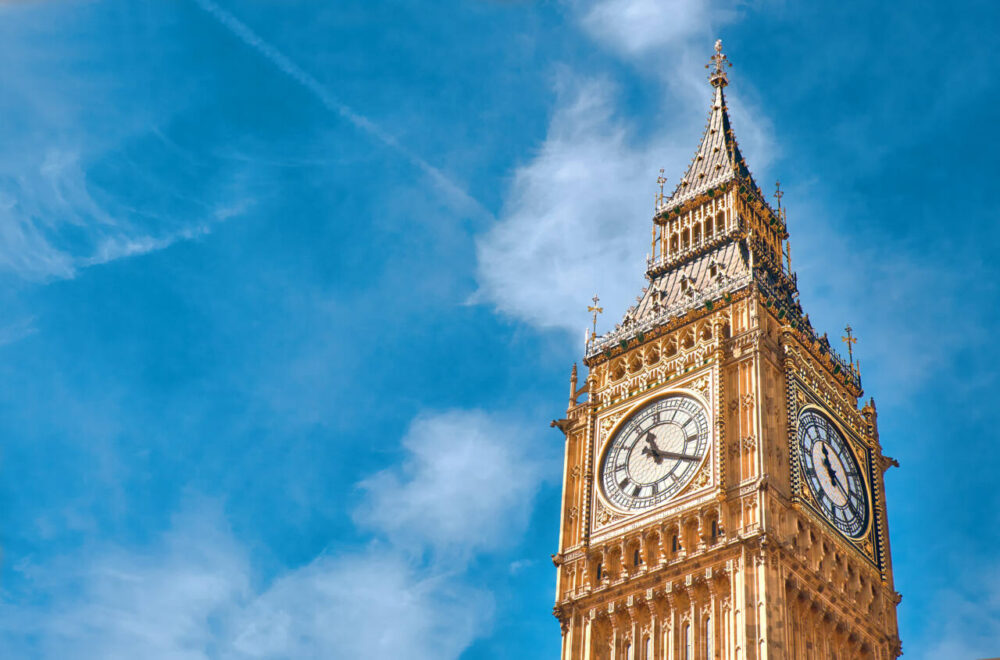Why do we have daylight saving time?

It’s that time of year again where daylight saving time begins and we “spring forward,” turning our clocks ahead an hour, making us extra-sleepy for a few days as our bodies adjust. Whether you love it (more daylight!) or hate it (less sleep!), have you ever stopped to think about why we do it and how it got started? Read on!
Why Do We Do Daylight Saving Time?
Officially, we observe daylight saving time (and, yes, that is “saving” with no extra “s” on the end) as a fuel-saving measure that began during World War I — more on that in a minute. But unofficially, it’s commerce that lead the charge for daylight saving: the U.S. Chamber of Commerce was a major backer for the policy, Time reports, because Americans getting off work while it was still light out meant they would be more likely to go out shopping in the evening.
MORE: Adjust to daylight saving time with these expert-approved wake-up lights
The History of Daylight Saving Time and When It Started
Technically, Germany started it during WWI. On May 1, 1916, Germany implemented daylight saving time to conserve electricity during the war and the rest of Europe followed suit. The United States adopted the practice roughly two years later on March 19, 1918, about a year into U.S. involvement in WWI. But though Germany was first to enact the practice and the U.S. got on board shortly after, neither country was the first to dream it up.
That distinction belongs to Englishman William Willett, who, in 1907, published the pamphlet “The Waste of Daylight” in effort to get Brits to enjoy more sunlight. In it, Willett wrote “the sun shines upon the land for several hours each day while we are asleep [and yet there] remains only a brief spell of declining daylight in which to spend the short period of leisure at our disposal.”
You may have heard before, erroneously, that Benjamin Franklin is the father of daylight saving time, but this is untrue — Franklin simply suggested changing sleep schedules in his satirical essay for the “Journal de Paris.” The essay advocated for early risers but did not suggest adjusting the time.
Why Do We Have Daylight Saving Time?
Here’s another common misconception: We observe daylight saving time for the benefit of farmers. This, too, is incorrect: According to Michael Downing, author of “Spring Forward: The Annual Madness of Daylight Saving Time,” farmers actually lobbied vocally against the practice, as it robbed them of precious morning daylight hours to get their crops to market. Dairy farmers are especially impacted, as cows apparently like routine. In fact, dairy farmers go out of their way not to disrupt their cows’ routines during the spring time change, instead changing the timing of everything else they do on the farm.
MORE: 7 Ways To Make Daylight Saving Time Easier On Your Body
So if it’s not for farmers, why do we have it? Though it originated with fuel-saving during WWI, commerce, sports and recreation industries have all been positively impacted by the extra daylight. “Baseball [was] a huge early supporter because there [was] no artificial illumination of parks, so to get school kids and workers to ball games with the extended daylight, they have a later start time,” Downing told Time.
When Did Daylight Saving Time Start?
Daylight saving time was abandoned after WWI and adopted again in WWII — both times as an energy-saving measure. But the practice wasn’t formally implemented until 1966 when President Lyndon B. Johnson signed the Uniform Time Act into law. It was the first peacetime daylight saving time law and stated that the U.S. would officially observe six months of daylight saving time and six months of standard time. The law required states to either adopt daylight saving time entirely or opt out entirely, which is why there are a couple states that don’t participate (more on them later).
The U.S. observance of daylight saving time has evolved a few times since 1966. In December 1973, President Richard Nixon started a two-year trial of year-round daylight saving time. That two-year trial run lasted just nine months. The dark early-morning proved dangerous for children on their way to school, and the public’s original 79% approval rating of the idea dropped to just 42%. In October 1974, standard time was restored.
MORE: How to become a morning person, once and for all
Twelve years later in 1986, the U.S. started observing seven months of daylight saving time — an extra month that, according to Time, the golf and barbecue equipment industries claimed was worth between $200 million and $400 million.
In 2005, those seven months turned into eight, which is why we now observe daylight saving time from March until November.
Which States Don’t Have Daylight Saving Time?
Hawaii and Arizona do not observe daylight saving time; however, the Navajo Nation within Arizona does observe daylight saving. Because the Navajo Nation extends outside Arizona and into Utah and New Mexico, they observe daylight saving time so that everyone on the vast reservation can live on the same clock schedule.
Who Actually Benefits From Daylight Saving Time?
Basically, it comes down to those who profit from more people venturing out later into the evening and spending money. Extra light equates to more money spent by Americans, specifically at gas stations and on leisure activities.
“Americans really do leave their homes when there is more sunlight at the end of the day,” Downing told The New York Times.
While it may have originated with fuel saving in mind, daylight saving time has negligible impact on energy conservation. Many studies have been conducted on the subject, and the best consensus across them is about a 0.34% decrease on electricity usage during daylight saving time.
“It has long been a cynical substitute for real energy policy,” Downing said in the Times interview. “It’s the ideal energy policy because it has no apparent direct cost to consumers, and it asks no one to consume less.”
MORE: These tips can help you adjust to daylight saving time more easily








